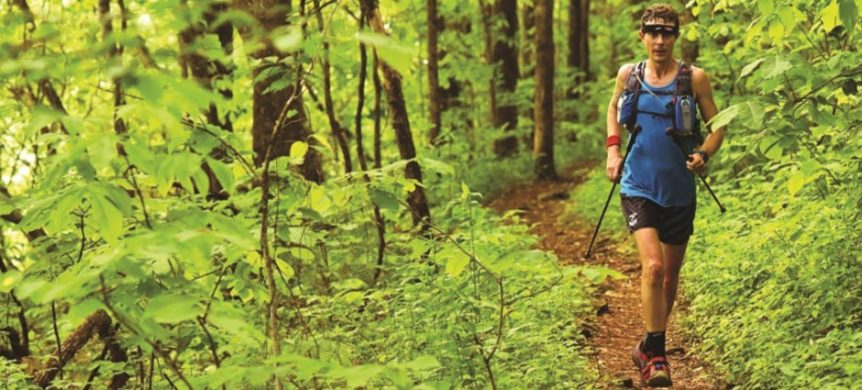He is one of the world’s greatest endurance athletes, with victories in nearly all of ultrarunning’s elite events, such as the 153-mile Spartathlon in Greece and the Hardrock 100 in Colorado. Most recently, he broke the record for running the 2,189-mile Appalachian Trail: 46 days, eight hours and seven minutes. While most people cannot fathom ever being able to run these distances, it’s even more difficult to comprehend that Scott has accomplished all of this while following a vegan diet.
How did you get into ultrarunning?
SCOTT JUREK: When I was young, I used to hate running. I ran to stay in shape for Nordic skiing, but I was more of a hunting and fishing boy. I ran my first marathon, and then my first 50-miler, at age 20 because I thought it would be good training. [Scott ran a sub-three-hour marathon and placed second in the 50-miler.] It was the hardest thing I had ever done, but when the emotional drain and discomfort wore off, I thought to myself, “This is something I want to do again.” That is the unique thing about endurance events: Once you get through the discomfort and challenge and get to the other side, it’s life transformative.
You have been a vegan since 1999. What inspired you?
When I was studying for my master’s degree in physical therapy, I became convinced that a lot of my patients’ problems stemmed from a poor diet, and this inspired me to become a vegetarian and then a vegan. Food was also an important thing in my family growing up. My mother and my grandparents instilled in me a real appreciation of what you put in your body. I’ve read many books on vegetarianism and veganism, and there continues to be support that we don’t have to eat animal products to maintain a healthy body. I’ve enjoyed breaking the myth that you need animal protein to be an athlete.
So as a vegan, what do you eat to stay fueled enough when racing?
It’s all about getting enough calories and eating healthy. For one-day races, I eat a lot of easily digestible, carbohydrate-based foods like Clif Bars, Clif Shot Bloks and electrolytes. Because the Appalachian Trail was multiple days, my diet was different compared to a one-day event. I would eat small meals throughout the day, like avocado sushi rolls, vegan pizza and smoothies just to break things up. Or a frozen burrito or pasta—the denser, the better. I had a support vehicle, so my wife, Jenny, and my team helped get me food. Sometimes it would be diner food, like greasy hash browns. Grease and oil were great fuels for me on the trail.
What is the most difficult thing about following a vegan diet?
Initially, there is a bit of a learning curve to know what foods to include and how to prepare them. But once I got beyond the learning phase, it was easy to follow a vegan diet. Navigating social meals and eating out can be challenging sometimes, too.
What’s next for you?
I have plans to write a book on my Appalachian Trail adventure, and I might have another long-distance trail in me, but it’s too soon to start thinking about that. I’m still licking my wounds, so to speak, from the Appalachian Trail.

I’ve had a long, successful career in ultrarunning, so I decided that I had to write this book. But rather than talk just about racing, I wanted to fold in nutrition, too. So along with personal stories, I’ve mixed in 20 recipes. I wasn’t destined to become a runner or a vegan; these are two transformative things that have had a huge impact on my life and still do. So the book is about my journey, and my goal is to inspire others to take their own kind of journey with fitness and food.
Read more about Scott at scottjurek.com.

